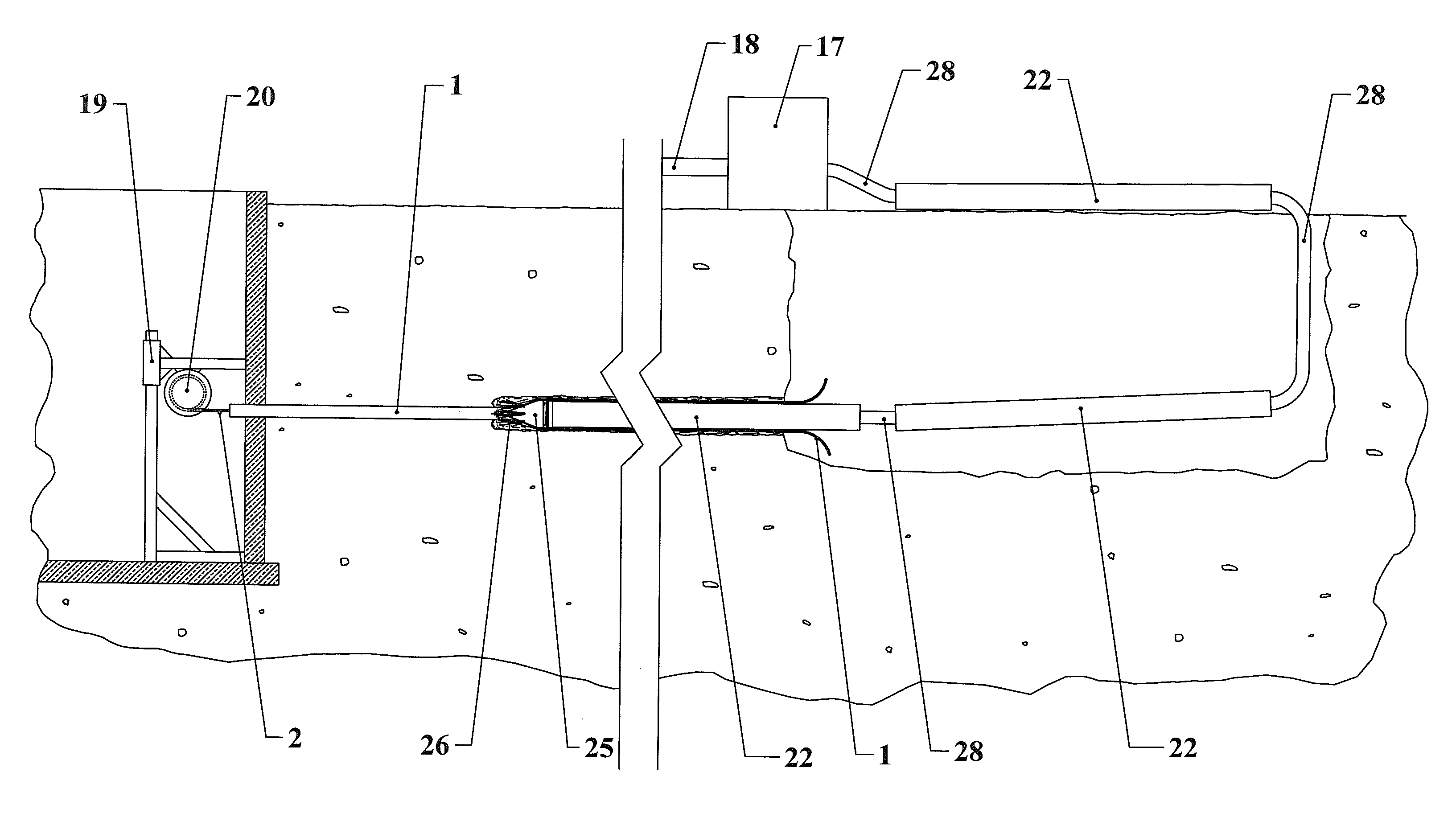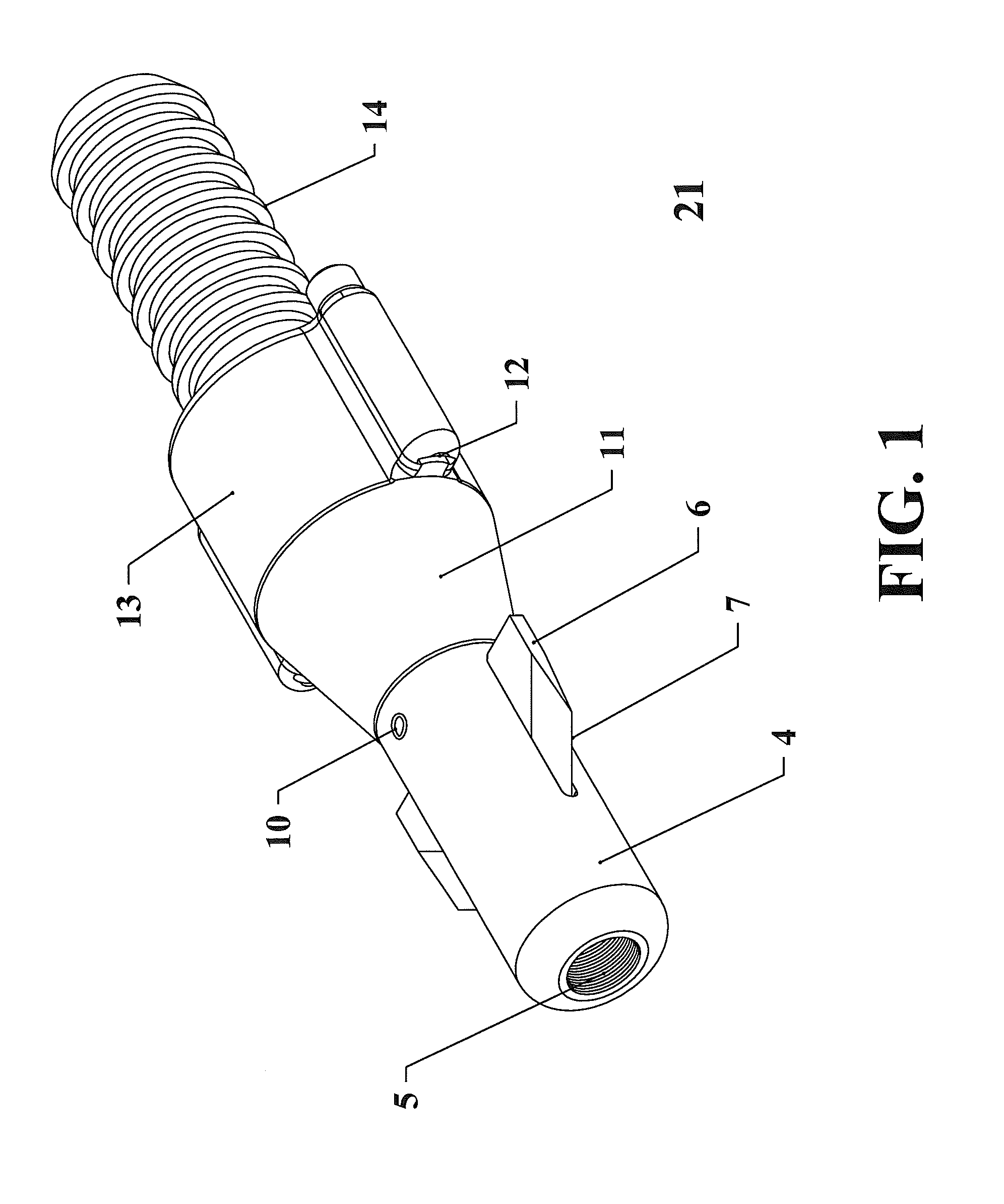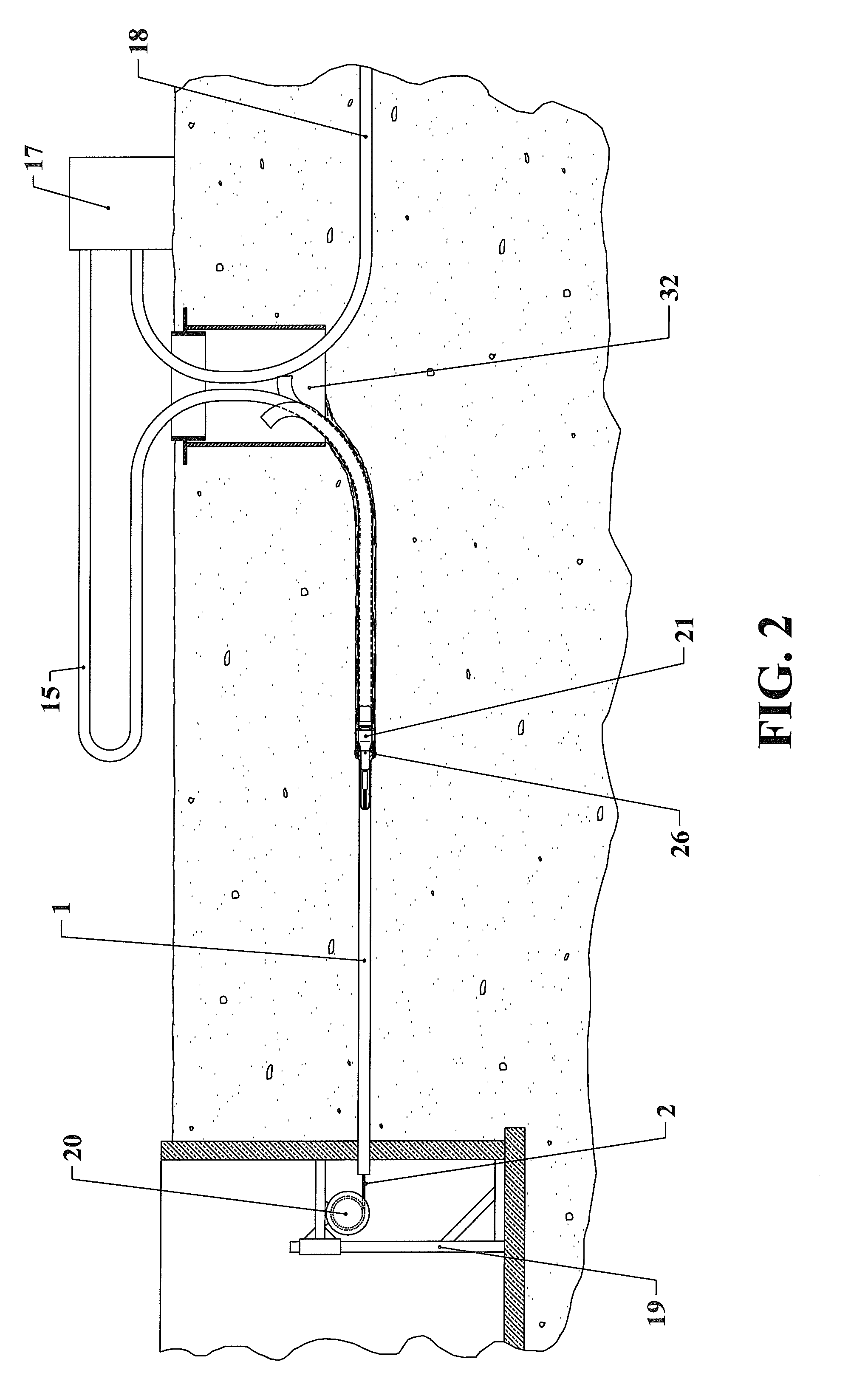High pressure water spray plastic pipe replacement apparatus and method
a technology of plastic pipe replacement and high pressure water spray, which is applied in the direction of mechanical equipment, pipes/joints/fittings, pipe elements, etc., can solve the problems of polybutylene polymer pipes that fail, degrade, rupture or damage, and need replacement, so as to reduce the friction force of replacement pipes
- Summary
- Abstract
- Description
- Claims
- Application Information
AI Technical Summary
Benefits of technology
Problems solved by technology
Method used
Image
Examples
Embodiment Construction
[0026]The plastic pipe replacement tool which is also referred to as the mole 21 is made of metal such as stainless steel and consists of as a nose section 4, expansion cone section 11, hose barb section 14, nozzles 12 and cutting blades 6 as shown in FIG. 1.
[0027]FIG. 2 of this embodiment is a general overview of the system where the mole along with the replacement pipe are pulled through the prior existing pipe from the upstream end of the pipe to be replaced toward the downstream end of the pipe to be replaced. On the upstream end of the pipe to be replaced are the water source 18, the high pressure water pump 17 and one end of the replacement pipe 15. The opposite end of the replacement pipe 15 is attached to the mole 21 at the hose barb section 14 which is on the upstream end of the mole. On the downstream end of the pipe to be replaced is the pulling devise 20 along with one end of the cable 2. The opposite end of the cable 2 is attached to the mole 21 at the nose section 4 wh...
PUM
 Login to View More
Login to View More Abstract
Description
Claims
Application Information
 Login to View More
Login to View More - R&D
- Intellectual Property
- Life Sciences
- Materials
- Tech Scout
- Unparalleled Data Quality
- Higher Quality Content
- 60% Fewer Hallucinations
Browse by: Latest US Patents, China's latest patents, Technical Efficacy Thesaurus, Application Domain, Technology Topic, Popular Technical Reports.
© 2025 PatSnap. All rights reserved.Legal|Privacy policy|Modern Slavery Act Transparency Statement|Sitemap|About US| Contact US: help@patsnap.com



